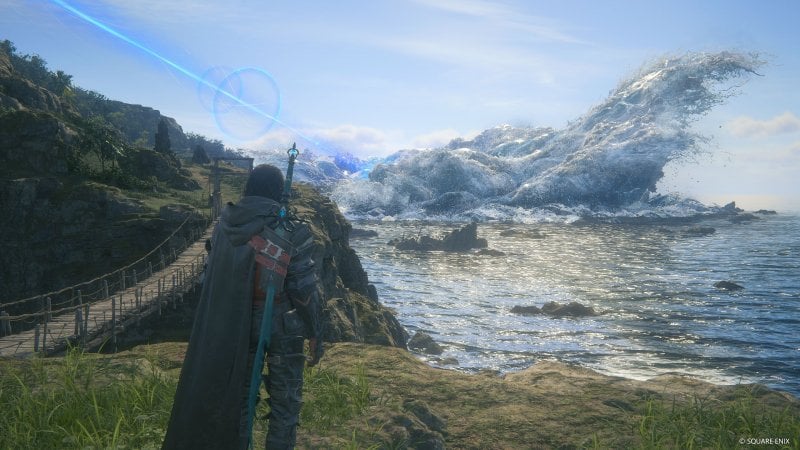
Final Fantasy 16 and 7 Rebirth, a former Square Enix explained why sales did not satisfy
A former Square Enix executive has explained why sales of FiFinal Fantasy 16 and 7 Rebirth were disappointing.
A former Square Enix executive , Jacob Navok, explained why the sales of Final Fantasy 16 and Final Fantasy 7 Rebirth were disappointing and how the accusation made against Square Enix of having unrealistic sales estimates is simply absurd.
The context is Square Enix’s latest financial report , in which the company’s president, Takashi Kiryu, spoke of disappointing results for the two games mentioned and Foamstar. All three did not achieve the objectives set. There were no updates on sales, that is, no numbers were revealed, but there was talk of the possibility of Final Fantasy 16 reaching its goals in 18 months.
Kiryu’s statements have revived the old debate about Square Enix’s impossible estimates, i.e. the company’s unreal sales prospects. Navok, who is currently CEO of Genvid Technologies but was in the past director of business development at Square Enix, however tried to clarify the issue, stating in a series of posts on X that “it wasn’t true when I was there and it’s unlikely to be the case today. Sales expectations generally arise from the need to cover development costs plus return on investment.”
Final Fantasy 16 and 7 Rebirth, a former Square Enix explained why sales did not satisfy
As a reminder I reported to two CEOs of Square Enix for the better part of a decade and ran a subsidiary. I also correctly predicted last year that Square Enix was going to break exclusivity. I’ll note I have no confidential information that I’m basing my arguments on.
To start,…
— Jacob Navok (@JNavok) May 23, 2024
“There is a misconception that has been repeated for nearly a decade and a half, that Square Enix sets arbitrarily high sales requirements and then gets angry when those requirements aren’t met.” Navok then explained that if a game costs $100 million to develop over five years, when it comes to market it must do better than a potential stock market investment in the same period: “In the last 5 years before February 2024, the stock market had an average rate of return of 14.5%. Investing that $100 million in the stock market would have given you a return of $201 million, so that’s our benchmark for ROI (Return On Investment).”
Cost problem

The problem with games like the aforementioned Final Fantasy lies in the very high production costs and increasingly fierce competition, especially free-to-play games. Furthermore, there is also the problem of the price, that is, out of the 70 dollars of the price of a game in the publisher’s coffers, around 49 dollars arrive.
“Let’s say you have $50 million in marketing spend , and let’s say you don’t get the full $49, but you average closer to $40, considering discounts, refunds, and other things. Now, let’s say in those first three months you sell 3 million copies while receiving this net $40 per copy (we will ignore recoveries. Must exceed $254 million to hit goals (that’s $100 million, plus $101 million in base ROI + $50 million marketing). With 3 million copies of FFXVI sold (the latest figure communicated by Square Enix), the company would have grossed only around $120 million according to these rough estimates, in reality the budgets of AAA games like this are probably higher than $100 million, so it’s not like Square Enix’s expectations are unrealistic. These titles simply don’t sell well enough for the amount of money that goes into their production and marketing.”
Navok added that “the crux of the problem is that the budgets were set during a period when audiences were expected to grow .” Decisions for the rebooted FFVII series were made “looking at 2015-2022,” when the video game industry was growing rapidly every year (not to mention the huge increase in revenue and player numbers during the pandemic).
Final Fantasy 16: The Rising Tide – Trailer with release date
Before the explosion of cross-platform free-to-play games like Fortnite, Square Enix and other publishers could simply look at their competitors and pick the right release date. It was easier to predict that audiences would have a certain amount of money to spend on a certain number of AAA game releases. Now, though, big-budget single-player games also have to compete for player time with free live services like Fortnite, Call of Duty: Warzone, and more.
In short, the market has changed a lot and has not gone in the direction hoped for when assigning a certain budget to these big titles. Even the idea of making them exclusive was born in a period in which it could still make sense to do so.
What could be the solutions? According to Novak the increase in prices, the reduction of development costs or the growth of the audience. For many players, however, the price of 70 dollars is already too high, while in terms of alternative forms of monetization the companies are already trying them all.
Also Read:
Call of Duty accused of spurring Uvalde school massacre in lawsuit